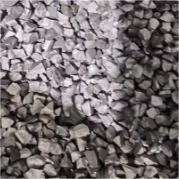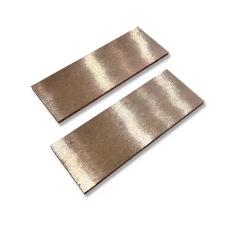**Metal Flattening: The Art of Squashing Sheets Flat**
(How To Flatten Metal Plate)
Working with metal often means dealing with warps, bends, and curves you never wanted. A perfectly flat sheet is essential for countless projects, from building sturdy frames to crafting precise parts. Getting that flatness isn’t always straightforward. This guide dives into the world of **metal plate flattening**, explaining the what, why, and how. We’ll cover practical methods, where you need it, and answer common questions. Let’s get that metal flat.
**1. What is Metal Plate Flattening?**
Metal plate flattening is the process of removing unwanted bends, twists, or waves from a sheet or plate of metal. Think of it like ironing wrinkles out of fabric, but much tougher. The goal is a smooth, level surface. This surface must be true across its entire area. Warping happens for many reasons. Metal gets stressed during cutting, welding, or even just rolling at the factory. Heat treatment can cause uneven cooling and distortion. Sometimes, metal arrives bent from shipping or storage. Flattening corrects these problems. It’s not about shaping the metal into curves. It’s about restoring a flat plane. Precision is key, especially for engineering or fabrication work. Even small deviations matter. The method used depends on the metal type, thickness, and how severe the warp is. Some techniques are simple. Others need heavy machinery. All aim for that perfect flatness.
**2. Why Flatten Metal Plates?**
Flat metal plates are absolutely necessary for many tasks. Ignoring warps leads to big problems. First, assembly becomes a nightmare. Trying to weld or bolt a bent plate to another part creates gaps, misalignment, and weak joints. The structure won’t be strong or safe. Second, precision work suffers. Machining a warped plate on a mill or lathe is impossible. The tool paths won’t match the intended design. You get inaccurate cuts and wasted material. Third, appearance matters. For visible parts like furniture, signs, or architectural panels, waves and bends look unprofessional. They ruin the finish. Fourth, functionality fails. Imagine a sealing surface that isn’t flat – leaks are guaranteed. Or a base plate for machinery that rocks – vibration and damage follow. Finally, stress hides in bent metal. These internal stresses can cause cracks later, especially under load. Flattening removes these stresses. It ensures the metal performs correctly and lasts. Skipping this step risks project failure.
**3. How to Flatten Metal Plates: Methods Explained**
Several methods exist for flattening metal plates. The right one depends on your tools and the job.
* **Hammer and Dolly (Manual):** This is the oldest way. Use a heavy hammer (like a planishing hammer) and a solid steel dolly held behind the metal. Hit the high spots firmly. The dolly supports the metal, preventing stretching. Move systematically across the bulge. This method works for thinner sheets and small areas. It requires skill. Hit too hard, you stretch the metal and make things worse. Practice is key. Good for auto body work or small repairs.
* **Roller Leveling (Machine):** This is common in steel service centers. The warped plate passes through a series of powerful rollers. These rollers bend the metal back and forth slightly beyond its yield point. This action realigns the metal’s grain structure. It removes internal stresses. The result is a uniformly flat plate. It’s excellent for large sheets and consistent results. You need access to this industrial equipment.
* **Hydraulic Press Flattening:** This uses immense, controlled pressure. Place the bent plate between two strong, flat platens in a hydraulic press. The press slowly squeezes the metal. This force compresses the high spots and forces the metal flat. It’s effective for thicker plates and localized bends. Care is needed. Too much pressure can damage the metal. Proper support under the plate is crucial.
* **Heat Straightening (Thermal):** Applying controlled heat can relax metal stresses. Heat specific areas on the convex (high) side of the bend. As the heated metal expands, it gets constrained by the cooler surrounding metal. When it cools, it contracts, pulling the metal flatter. This needs experience. Too much heat warps the metal further. It’s often used alongside mechanical methods. Common for large structural pieces.
* **Stretcher Leveling:** This machine grips the sheet metal along its edges. It then applies tension, pulling the metal taut. This tension pulls out minor waves and buckles. It’s mostly for thinner sheets. It won’t fix major bends or thick plates.
**4. Applications of Flattened Metal Plates**
Flattened metal plates are the foundation for countless things. Their uses are everywhere you look.
* **Construction and Structural Steel:** Flat base plates are vital for columns and machinery. They ensure even load distribution and stability. Girders and beams need flat flanges for proper welding and bolting. Floor plates and decking require flatness for safety and appearance.
* **Manufacturing and Machining:** Precision is non-negotiable here. Machine tool tables must be perfectly flat for accurate cutting. Fixtures and jigs rely on flat plates to hold parts correctly during machining. Stamping dies need flat stock to form consistent parts. Any warp ruins the process.
* **Transportation:** Think of truck beds, trailer floors, and aircraft skin panels. These need to be flat for strength, aerodynamics, and attaching other components securely. Auto body panels start as flat sheets before stamping.
* **Furniture and Architectural Elements:** Modern tables, benches, countertops, and wall cladding use flat metal for a clean, sleek look. Warps are immediately visible and unacceptable. Signage also demands flatness for proper mounting and legibility.
* **Tooling and Equipment:** Strong, flat plates form the beds for presses, brakes, and shears. Workbenches need flat surfaces. Guards and enclosures around machinery fit better when made from flat stock. Precision measuring surfaces like surface plates *are* the definition of flatness.
* **Energy Sector:** Platforms, walkways, and support structures in oil & gas or power generation require flat plates for safety and assembly. Heat exchanger plates need flatness for efficient sealing.
**5. Metal Plate Flattening FAQs**
Here are answers to common questions about flattening metal.
1. **Can all types of metal be flattened?** Mostly yes, but ease varies. Mild steel is easiest. Aluminum flattens well but can work-harden quickly. Stainless steel is tougher and springier, needing more force. Very brittle metals like cast iron can crack easily. Hardened tool steel is difficult to flatten without annealing first.
2. **How flat is “flat enough”?** This depends entirely on the application. A workbench top might tolerate 1/16″ over 4 feet. A machine tool table might need precision measured in thousandths of an inch. Always know the required flatness tolerance for your project.
3. **Can I flatten metal without special tools?** For very thin sheet and small bends, maybe. A mallet on a flat concrete floor might work. A heavy weight left for a long time might help minor warps. But for reliable results, especially on thicker plate, proper tools (hammer/dolly, access to a press) are almost always needed.
4. **Does flattening weaken the metal?** Done correctly, it shouldn’t weaken it. Methods like roller leveling actually improve consistency by relieving stress. However, excessive hammering can stretch and thin the metal locally. Over-pressing can cause damage. Use the right force for the job.
5. **Why does my metal warp again after flattening?** This usually means residual stress remains. The flattening process didn’t fully relieve it. Or, new stress was introduced during handling or cutting after flattening. Sometimes, the metal needs stress relieving (heat treatment) before final flattening to lock in the flat shape. Ensure the flattening method is thorough for the severity of the initial warp.
(How To Flatten Metal Plate)
6. **Should I flatten before or after cutting?** It’s generally best to flatten the plate *before* cutting out your final shape. Cutting (especially thermal cutting like plasma) introduces new heat and stress, which can cause the smaller cut piece to warp again. Flatten the large sheet first, then cut.
Inquiry us
if you want to want to know more, please feel free to contact us.


